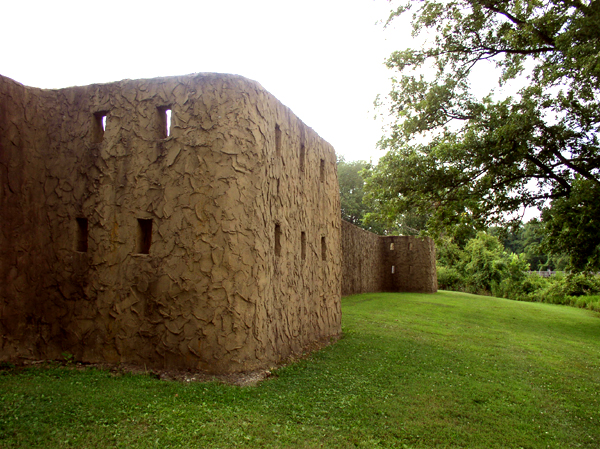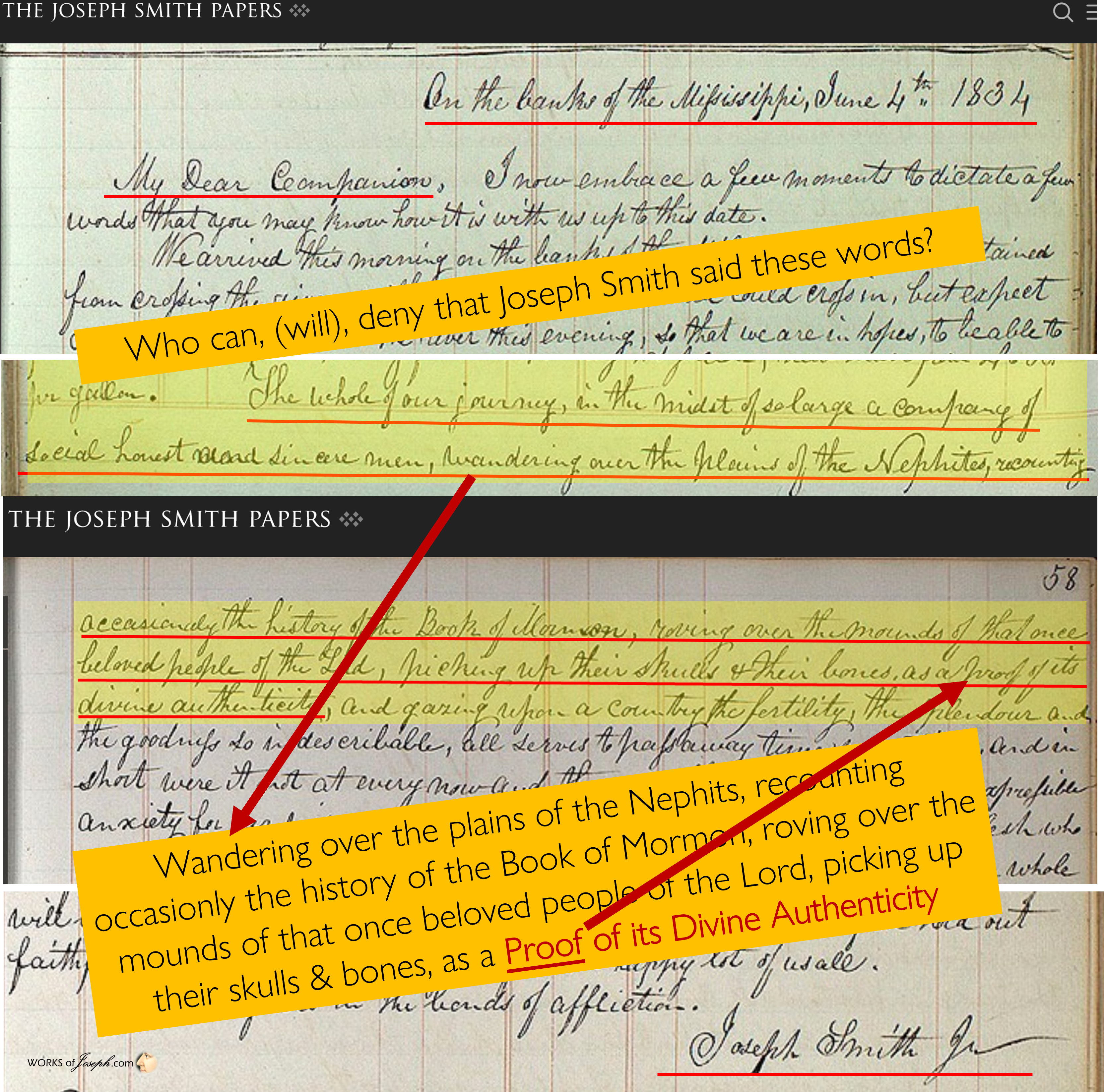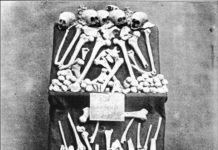NEPHITE BUILDING MATERIALS
See Annotated Book of Mormon by David Hocking and Rod Meldrum Pages 349, 383, & 397
Hugh Nibley stated: “In view of the nature of their civilization one should not be puzzled if the Nephites had left us no ruins at all. People underestimate the capacity of things to disappear, and do not realize that the ancients almost never built of stone. Many a great civilization which has left a notable mark in history and literature has left behind not a single recognizable trace of itself. We must stop looking for the wrong things.” (An Approach to the Book of Mormon, pg. 431)
Hugh Nibley also observed: “A closer approximation to the Book of Mormon picture of Nephite culture is seen in the [mound builder] earth and palisade structures of the Hopewell and Adena culture areas than in the later stately piles of stone in Mesoamerica…” (The Prophetic Book of Mormon’, pp.272-273)
“The Nephites vastly preferred wood to any other building material, and only worked in cement when they were forced to by shortage of timber. Indeed, they refused to settle otherwise good lands in the north if timber for building was lacking (Helaman 3:5). Where they reluctantly settled in unforested areas they continued to “dwell in tents, and in houses of cement,” while they patiently waited for the trees to grow (Helaman 3:9). Since cement must be made of limestone [see. p. 63], there was no lack of stone for building in the north. Why then did they not simply build of stone and forget about the cement and wood? Because, surprising as it may seem, ancient people almost never built of stone. Even when the magnificent “king Noah built many elegant and spacious buildings,” their splendor was that of carved wood and precious metal, like the palace of any great lord of Europe or Asia, with no mention of stone (Mosiah 11:8-9). The Book of Mormon boom cities went up rapidly (Mosiah 23:5; 27:6), while the builders were living in tents. And these were not stone cities: Nephite society was even more dependent on forests than is our own” – Hugh Nibley, An Approach to the Book of Mormon, 2nd Edition, Chapter 29,
Building Materials, Salt Lake City: Deseret Book Co. [1964].
Helaman 3:7 And there being but little timber upon the face of the land, nevertheless the people who went forth became exceeding expert in the working of cement; therefore they did build houses of cement, in the which they did dwell. 8 And it came to pass that they did multiply and spread, and did go forth from the land southward to the land northward, and did spread insomuch that they began to cover the face of the whole earth, from the sea south to the sea north, from the sea west to the sea east. 9 And the people who were in the land northward did dwell in tents and in houses of cement, and they did suffer whatsoever tree should spring up upon the face of the land that it should grow up, that in time they might have timber to build their houses, yea, their cities, and their temples and their synagogues and their sanctuaries, and all manner of their buildings. 10 And it came to pass as timber was exceedingly scarce in the land northward, they did send forth much by the way of shipping. 11 And thus they did enable the people in the land northward that they might build many cities, both of wood and of cement. 12 And it came to pass that there were many of the people of Ammon who were Lamanites by birth, did also go forth into this land.
Burnt Lime Plaster (“cement”)
There is a temple mound situated above the Ohio River near Cincinnati. “Fragments of burnt limestone may still be seen on the top. The mound is a rectangle two hundred and twenty-five feet long by one hundred and twenty feet broad, and seven feet high.” In contrast to the hewn stone buildings and altars of Mexico, the Ohio mound has the right dimensions to have accommodated a timber and burnt lime plaster (“cement”) building of the size and proportions of Solomon’s Temple.” J. P. Maclean, The Mound Builders – Archaeology of Butler County, Ohio, 1904, pp. 222-223.
 (Left) Huts located at Fort Ancient, Lebanon, OH, were made of rectangular or circular sapling frames covered in mats, bark and animal hides. These huts may have been similar to the type of homes built by the Nephites. (Photos by Rod Meldrum and found on Page 349 of Annotated Book of Mormon)
(Left) Huts located at Fort Ancient, Lebanon, OH, were made of rectangular or circular sapling frames covered in mats, bark and animal hides. These huts may have been similar to the type of homes built by the Nephites. (Photos by Rod Meldrum and found on Page 349 of Annotated Book of Mormon)

The outer wall of this timber-built circular hut, shown above, depicts how they were covered with clay daub, a type of “cement” filler (see p. 63 Annotated Book of Mormon). (Right photo by Bill) Typical Hopewell Indian hut.
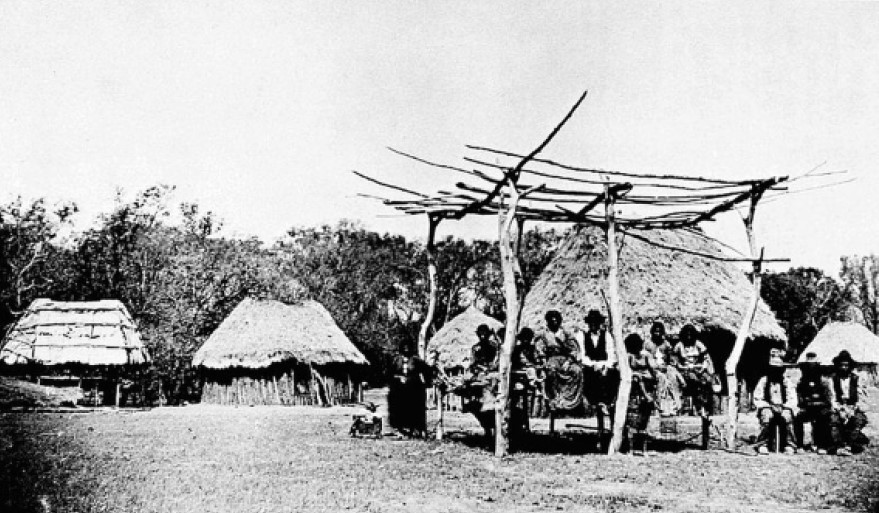
(Left) Smithsonian Institution, Bureau of American Ethnology. In: Wilbur Sturtevant Nye, Plains Indian raiders: the final phases of warfare from the Arkansas to the Red River, with original photographs by William S. Soule. University of Oklahoma Press, 1st edition, 1968, ISBN 0806111755, p. 400. On the left: Homes built by Plains Indians with timber frames and thatch roofs.


(Above) Angel Mounds, located in southwest Indiana had defensive walls made of timber plastered with a type of cement. (Photos by Rod Meldrum and also on page 383 of Annotated Book of Mormon)
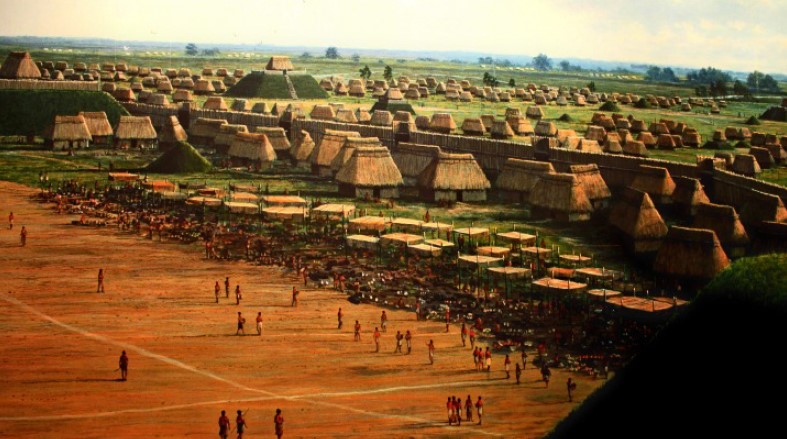
(Above) Depiction of an Ancient Indian Village with Walled Fortifications Cahokia Mounds, Illinois
NEPHITE CITIES BUILT WITH WOOD BURNED

▪ “And many great and notable cities were sunk and many were burned” (3 Nephi 8:14).
▪ “And behold, that great city Jacobugath which was inhabited by the people of King Jacob, have I caused to be burned with fire” (3 Nephi 9:9).
▪ “And behold the city of Laman and the city of Josh and the city of Gad and the city of Kishkumen, have I caused to be burned with fire” (3 Nephi 9:10).
▪ “And it came to pass that whatsoever lands we had passed by and the inhabitants there were not
gathered in were destroyed by the Lamanites, and their towns and villages and cities were burned with
fire” (Mormon 5:5).
▪ “And he [Shiz] did overthrow many cities, and he did slay both women and children, and he did burn
the cities” (Ether 14:17; Jaredite timber cities).
“And I did teach my people to build buildings, and to work in all manner of wood” – 2 Nephi 5:15.
“And the people who were in the land northward did dwell in tents, and in houses of cement, and
they did suffer whatsoever tree should spring up upon the land that it should grow up, that in time
they might have timber to build their houses, yea, their cities, and their temples, and their
synagogues, and their sanctuaries, and all manner of their buildings” – Helaman 3:9.
Since the Nephites and Jaredites built their cities primarily out of wood, with no mention in the text of any buildings made of stone, burning would be the most effective way to destroy them.
 (Left) “American Indian Life in the Late Prehistoric Period” By
(Left) “American Indian Life in the Late Prehistoric Period” By  Susan A. Walton Courtesy of Hopewell Cultural Center, Chillicothe, Ohio
Susan A. Walton Courtesy of Hopewell Cultural Center, Chillicothe, Ohio
(Right) Chief of the Taensa Indians Receiving La Salle. March 20, 1682 By George Catlin (July 26, 1796 December 23, 1872) Wooden Homes of the Taensa Indians.
American Cement
“This name has been lately given to a geological compound, so arranged that it crystallizes into perfect stone. It is now well settled, that we can prepare the constituent parts of various rocks so as to render them subject to the laws of affinity, which soon unites them into their former solid state. It is now generally believed that all rocks were once in a liquid, or semi-liquid state, so as to admit of motion among their particles. As the laws of nature are immutable, it is obvious that if the elements of various rocks are brought into the same state, in which chance often throws them on the surface of the globe, their crystallization is certain. And sometimes we find fragments of different rocks and pebbles united by an intervening formation which has crystallized around them. Hence the production of artificial stone is as much the work of nature as the fruit of an apple-tree. When their natural products are being developed, we may vary the soil which gives nourishment to the latter, and the elements which enter into the composition of the former.—Buffalo Paper.” American Magazine of Useful and Entertaining Knowledge, Volume 3 Page 76 edited by Nathaniel Hawthorne, Elizabeth Manning page 76
Jonathan Neville about Cement
I’m getting questions about cement, so I’ll repeat what I’ve said about one of my favorite “Kno-Whys” of all time.
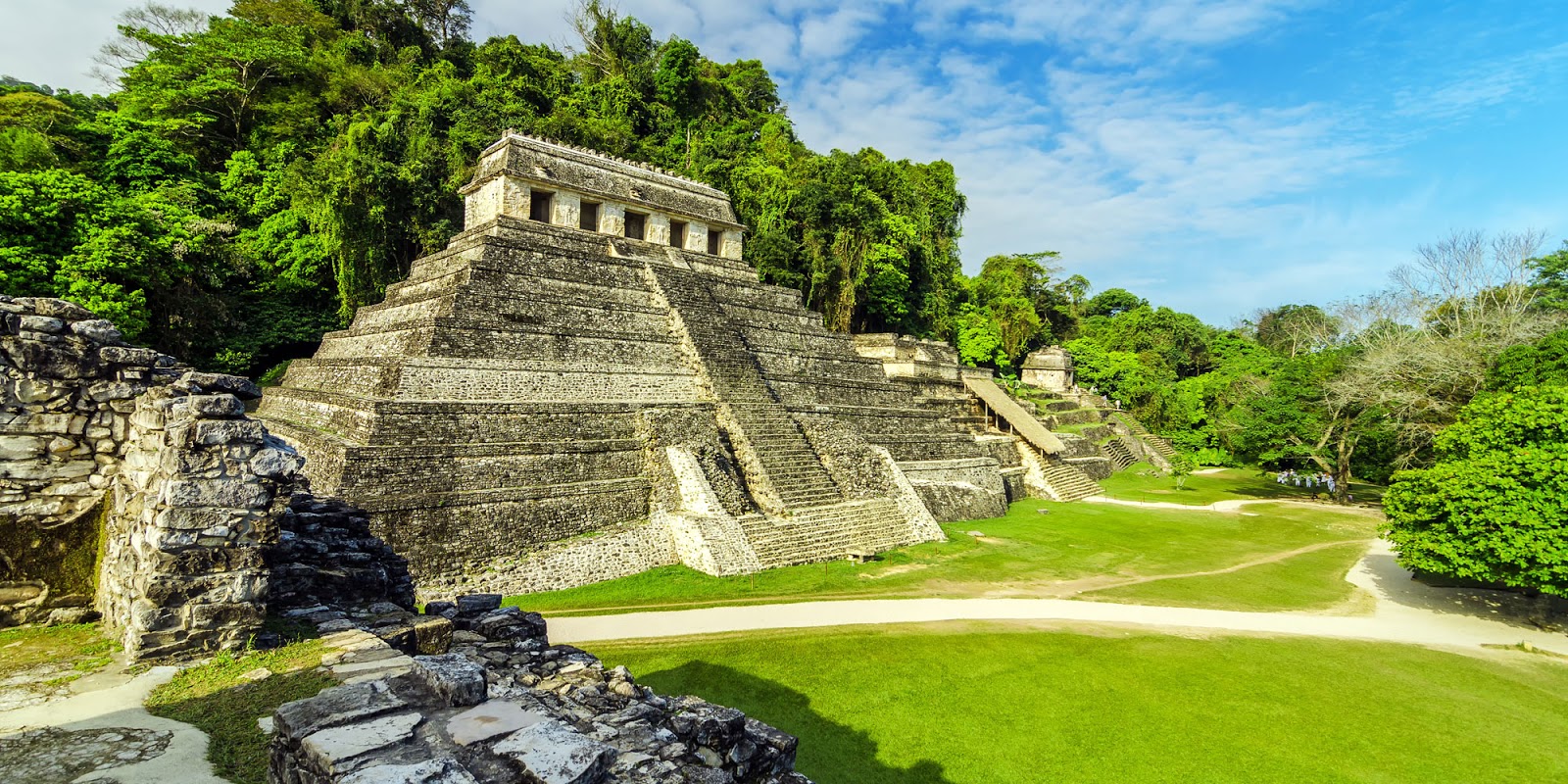
You can see it here: https://knowhy.bookofmormoncentral.org/content/when-did-cement-become-common-in-ancient-america
I blogged about it before: http://bookofmormonwars.blogspot.com/2016/11/cement.html. I have a few more comments below, but first, let’s talk about the only known instance of Nephite cement.
 The only known Nephite cement was the cement that Moroni used when he built the stone box for the plates, as described by Joseph and Oliver.
The only known Nephite cement was the cement that Moroni used when he built the stone box for the plates, as described by Joseph and Oliver.
Unless by now the Mesomaniacs have talked themselves into disbelieving what Joseph and Oliver said about the box, even they have to admit that Moroni used Nephite cement in New York. There is no other instance of Nephite cement that we can identify with 100% confidence.
“The box in which they lay was formed by laying stones together in some kind of cement.” Joseph Smith-History 1:52.
Oliver Cowdery (who, according to Book of Mormon Central, was an ignorant speculator so you won’t find this in any of their no-wise) described the situation on the Hill Cumorah this way:
“First, a hole of sufficient depth, (how deep I know not) was dug. At the bottom of this was laid a stone of suitable size, the upper surface being smooth. At each edge was placed a large quantity of cement, and into this cement, at the four edges of this stone, were placed, erect, four others, their bottom edges resting in the cement at the outer edges of the first stone. The four last named, when placed erect, formed a box, the corners, or where the edges of the four came in contact, were also cemented so firmly that the moisture from without was prevented from entering. It is to be observed, also, that the inner surface of the four erect, or side stones was smoothe. This box was sufficiently large to admit a breast-plate, such as was used by the ancients to defend the chest, &c. from the arrows and weapons of their enemy. From the bottom of the box, or from the breast-plate, arose three small pillars composed of the same description of cement used on the edges; and upon these three pillars was placed the record of the children of Joseph, and of a people who left the tower far, far before the days of Joseph, or a sketch of each…” http://www.josephsmithpapers.org/paper-summary/history-1834-1836/95
This was in New York, not Mesoamerica.
It shouldn’t surprise anyone that Moroni knew how to work with cement in New York; he and his father Mormon wrote the Book of Mormon while they lived in what is now New York. Moroni told Joseph that the record was “written and deposited not far from” his home.
The fun part about this no-wise is how the Book of Mormon never mentions the people building with stone (except one wall in Alma 48:8). They built with wood and with wood and cement.
Helaman 3:11 “And thus they did enable the people in the land northward that they might build many cities, both of wood and of cement.”
That’s right. Wood. Cement.
Not stone.
And yet, all the evidence cited by the no-wise involves ancient Central Americans building with stone and cement.
This might seem like nitpicking, but it’s an essential difference. If we’re looking for the Book of Mormon culture described by the text, we’re not looking for a culture that built with massive stones, engraved their history on stella, etc.

In fact, in a thousand years of history, exactly one engraved stone is even mentioned (Omni 1:20), and that was because its uniqueness made it so remarkable. And it wasn’t even a Nephite or Lamanite who engraved it.
We’re looking for a culture that built with earth and wood, primarily. They only used cement when they needed to let timber grow, because they preferred to build with timber. Only in one instance, Helaman 3, (again, so unusual it deserved special mention) with wood and cement.
IOW, the “cement” requirement describes ancient North American culture and excludes ancient Central American culture.
Of course the Mesoamerican/two-Cumorahs advocates cite “cement” as a “correspondence” between the Book of Mormon and Mesoamerica. I’d like to know of any human society that did not use a material that could be called “cement.” It’s another illusory correspondence, designed to support the rejection of what Joseph and Oliver taught about Cumorah in New York.
You can see archaeological reconstructions of ancient wood and cement structures at museums in Ohio.
And they are houses, just as the Book of Mormon describes.
Naturally, we don’t expect much, if any, Nephite cement to exist today. Even modern cement doesn’t last a long time where there is freezing and thawing.
Notice that Moroni knew this when he buried his stone box into the hill Cumorah and kept the moisture from entering.
We all wish Joseph or Oliver had kept a sample of Moroni’s cement. But at least they left us this detailed account of it.
Which, in any rational world, would be enough evidence to tell us where the Book of Mormon actually took place.
Here’s another perspective: http://www.bookofmormonpromisedland.com/nephite%20cement.htm
Source: Book of Mormon Wars Jonathan Neville
Onondaga Limestone and Reeds by W. Vincent Coon
 “I pulverized the limestone to powder and heated it to incandescence, converting some of the limestone (calcium carbonate) to calcium oxide. Ancient North Americans capable of smelting copper, could have produced temperatures hot enough to make moisture resistant lime plaster. Burnt lime “plaister” was known to the Israelites of old. (Leviticus 14:42, Isaiah 33:12) Hebrew scripture, in fact, may have inspired Nephite “cement”.
“I pulverized the limestone to powder and heated it to incandescence, converting some of the limestone (calcium carbonate) to calcium oxide. Ancient North Americans capable of smelting copper, could have produced temperatures hot enough to make moisture resistant lime plaster. Burnt lime “plaister” was known to the Israelites of old. (Leviticus 14:42, Isaiah 33:12) Hebrew scripture, in fact, may have inspired Nephite “cement”.
I then made a “wattle and daub” type structure of reeds cemented with clay.

I mixed the cooked powdered limestone with water (it warmed exothermically as I mixed in the water). I applied the moist paste to the exterior of the reed and clay model. When dry, the cooked lime plaster formed a moisture resistant coating on the exterior of the model shelter.
“Wattle and daub” type structures are known to have been made by many ancient peoples around the world, particularly in areas where timber was scarce…
A 19th Century definition of “cement” is “any substance applied in a soft or glutinous state to the surfaces of solid bodies to make them cohere firmly”. (Oxford English Dictionary)
The mound builders of North America are known to have made “wattle and daub” houses using materials that qualify for the definition of “cement” in use in Joseph Smith’s day. The Bible makes mention of “daubed” structures. (Ezekiel 13:15).” W. Vincent Coon

The outside of the temple may have been finished with a mortar cement made out of limestone which was prevalent in the Promised Land. We also find mention of cement houses in the Book of Mormon. Helaman 3:7. “Lime mortar is a type of mortar composed of lime and an aggregate such as sand, mixed with water. It is one of the oldest known types of mortar, dating back to the 4th century BC and widely used in Ancient Rome and Greece. After processing, products derived from limestone have the unique ability to return fairly quickly to their original chemical form.” Lucas, A. 2003 Ancient Egyptian Materials and Industries.
*Clay: In ancient Hebrew, the word “chomer” (pronounced as kho’mer) may be translated into “cement” but is synonymous with clay and is more commonly used to represent a type of filler or daub than it is to represent cement. (See p. 349 for examples.) (*https://biblehub.com/hebrew/2563.htm)
I. חֹ֫מֶר noun masculine cement, mortar, clay; — ׳חabsolute Genesis 11:3 13t.; construct Isaiah 10:6 2t.; —
1 mortar, cement for holding building-stones (brick) together Genesis 11:3 (J), Exodus 1:14 (P; both “” לְבֵנִים); Nahum 3:14 (“” טיט).
2 clay:
a. as material of vessels Jeremiah 18:4,6, היצר ׳ח Isaiah 29:16, in simile of God’s fashioning man Isaiah 45:9; Isaiah 64:7; Job 10:9; as material of human bodies ׳בָּתֵּי ח Job 4:19; compare Job 33:6; as material of bulwarks (disparagingly) Job 13:12; חותם ׳ח = seal-clay i.e. clay upon which seal is pressed.
b. = mire חוצות ׳ח Isaiah 10:6; ׳הֹרָנִי לַח Job 30:19 he hath cast me into the mire, i.e. deeply humiliated me (עָפָר and אֵפֶר in “” clause); as simile of commonness, abundance Job 27:16 (“” עָפָר).
The temple would be built on the highest point of the Nephite settlement. (Painting represents Lookout Mountain above Moccasin Bend on the Tennessee River). It would be facing directly east symbolic of The Savior’s coming. It was to be built like Solomon’s. The altars of the temple were made of stacked stone, not hewn stone. “The word in Exodus 20:25 which is translated as ‘tool’ is the Hebrew חרב which most literally means ‘sword’. There explains that a sword is designed to shorten life, while an altar is designed to lengthen life by being used to achieve atonement. It makes sense, therefore, that one should not be used in the formation of the other.” Rashi, Medieval French Rabbi.
In reference to Solomon’s Temple, the LDS Bible Dictionary says; “The temple walls were composed of hewn stone made ready at the quarry. The roof was of cedar and the walls were paneled with it. The cedar was carved with figures (cherubim, palm trees, and flowers) and was overlaid with gold fitted to the carving. All the materials for the house were prepared before they were brought to the site… There were two temple courts. The inner court was surrounded by a wall consisting of three rows of hewn stone and a row of cedar beams.” 1 Kgs. 6:36. “And Solomon’s builders and Hiram’s builders did hew them, and the stonesquarers: so they prepared timber and stones to build the house.” 1 Kings 5:18. “Pillars of Solomon’s temple (1 Kgs. 7:21; 2 Chr. 3:17); the names denote “He will establish” [Jachin] and “In Him is strength” [Boaz]. The pillars, which stood on the south and north sides of the porch, were probably ornamental and not intended to support any part of the weight of the building.” LDS Bible Dictionary.
More about Ancient Cement
The natural and aboriginal history of Tennessee: up to the first settlements therein by the white people, in the year 1768 BY JOHN HAYWOOD, OF THE COUNTY OF DAVIDSON, THE STATE OF TENNESSEE. NASHVILLE : PRINTED BY GEORGE WILCOX, 1823. Page 356-7
In the year 1794, was discovered, in North Carolina, a subterranean wall, about twelve miles above Salisbury, in Rowan county. It was parallel to a small branch, which ran into a creek about 30 yards below the wall. It is ten or twelve yards distant from the stream, and runs into a hill on the side of a branch, and upon the upper part of it. On this side of the rivulet and extending to it, was a cleared field. The rain water running from the hill to the branch, carried away in a gully, the soil above the wall, and exposed it to view. The inner side was then uncovered, as well as the outer, by digging. It is somewhat less than two feet thick. It is said, that as the hill rises, the wall rises, still keeping its upper part at the same distance below the surface as it was in the bottom. The wall is perfectly straight, except a small circular offset of about six feet, after which it is continued in its former direction. Some persons have dug ten or twelve feet by the side of the wall, without finding its bottom, or any alteration in its form. The stones of which it is composed, are all of a dark blue colour, containing iron, of the size and shape of small bricks, and exactly similar to others on the opposite hill, about the distance of 250 or 300 yards, where an abundance of the same sort of stones was to be seen in 1794. These stones, seven or eight inches long, are placed across the wall, and in the middle are stones of all sorts and shapes. There is between the stones a mortar, or cement, the outer side of which is of a ferruginous or dark colour ; the inside, of the thickness of one sixth or eighth of an inch, was a pure white substance, of the precise colour of lime, made of burnt limestone, or oyster shells, and rendered adhesive by the addition of water ; in which state being laid away, it had afterwards become dry and hard. When the outer stones do not exactly fit, there seems to be a small fragment of stone wedged in so as to fill the space. The mortar in some places is said to be an inch thick, where the stones do not exactly fit to one another. The wall seems to have been plastered on both sides with the same kind of mortar. He who has not seen it may think it a work of nature ; but not him who has — one of whom is the writer. I look at it, and the hill above, and adjoining to it, will not fail to force the idea, of soil heaped in a diluted state, against, upon, and over the wall, without throwing it down. I would rather say, of settling against and reposing upon it, till it acquired a more solid consistence by exposure to the sun and wind. A lesser wall has since been discovered at the distance of five or six miles from this. It has been traced fifty or sixty feet. Jt is only seven inches thick, and all the stones reach quite across the wall. These walls are probably of the same age.
In 1783, in the county of Craven, in North Carolina, at the plantation of General William Bryant, was a stream on which he had a mill. A point of land projected into the stream, against which the dam was made to abut. Into the bluff lie cut twenty feet or more, for a site for the millhouse. At the “bottom of this cavity, in red clay, the diggers filled a hard glass bottle, of uncommon thickness, with a short neck, and the lower part with bulges projecting on the sides, as if protruded by the pressure of the bottle to the ground when in a plastic state. Near the spot where the bottle was found, when a number of fire coals and some chumps. The bottle was fifteen or twenty feet at least below the surface of the bluff, and more than thirty feet from the margin of the stream.
Along the Ohio, where the river in many places swells over its banks, hearths and fire-pllaces are seen, two, four and six feet below the surface It is supposed by some to be a long time since the dirt was deposited over them. Around them are immense quantities of muscle shells, bones of animals, &c. Upon the surface above these chimneys and fireplaces, there grew, at the first settlement of the country by the whites, as large trees as any in the forest. The conclusion made by some, is, that a large space, probably l,000 years, has elapsed since these hearths were deserted. Muscle shells used in all the pottery of the ancient inhabitants, and found at all their dwellings, shows a much greater abundance of them produced in our waters in those days, than at the present; a much more agreeable taste in the muscle than at the present day, and of course a change in the waters themselves, to much more freshness now than then. Source: https://archive.org/stream/naturalaborigina00hayw#page/n10/mode/2up
More of Angel Mound’s recreated palisades of cement in Evansville, Indiana.



